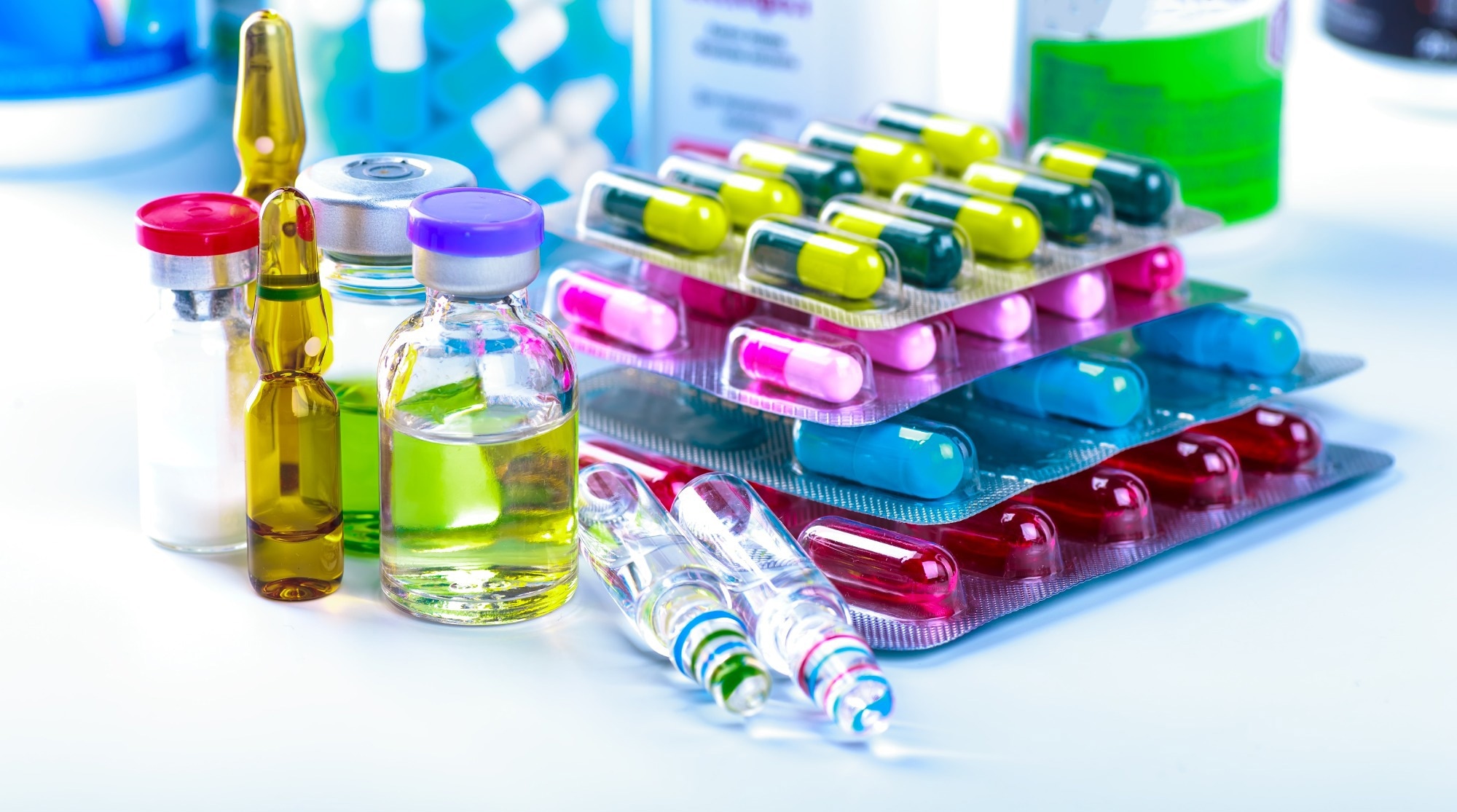High-purity inert gases, including nitrogen, carbon dioxide, and argon are vital to safeguarding sensitive compounds within the pharmaceutical supply chain. From start-ups to full-scale production, Air Products provides pharmaceutical-grade inert gases for use in all applications in various supply modes.
Some of the world’s most sophisticated chemical compounds are produced by the pharmaceutical industry. As the industry is strictly regulated, companies must go to great lengths to ensure that their products adhere to exacting standards of purity and efficacy .1
The purity and safety of medicines and active pharmaceutical ingredients are threatened by atmosphere exposure, from the manufacturing process to the point of use. To protect and preserve these substances from atmospheric degradation, the pharmaceutical industry relies on inert gases.

Image Credit: Bukhta Yurii/Shutterstock.com
Blanketing Gases
Yields and purity can be affected during manufacturing when moisture or oxygen in the air reacts with sensitive reagents and intermediate compounds cause various unwanted reactions. Inert gases are used within these applications for blanketing, which refers to replacing the atmosphere with dry inert gas to prevent these reactions.
A low-pressure flow of high-purity gas is typically used for blanketing applications to fill the vapor space at the top of a tank or reaction vessels. Though small amounts of blanketing gas may leak out, maintaining a slight positive pressure means that atmospheric contamination will not leak into the vessel.
Tank blanketing is often essential for safety where flammable substances are used as well as protecting sensitive chemicals from degradation. Blanketing is a reliable way of preventing combustion, and, given that it is not always feasible to remove ignition sources, it creates a non-flammable environment by preventing oxygen from entering the tank.
Packaging Gases
To maximize their shelf life and ensure safety and efficacy at the point of use, medicines must be protected from reactive components in the atmosphere.
Using blister packs is a convenient method of ensuring that pills remain in a protective inert environment until they are used. Sterile form-fill-seal (FFS) vials are commonly used for liquid medicines; these are formed, sterilized, filled with medicine, and subsequently topped up with dry inert gas before being sealed.2
Pharmaceutical Grade Inert Gases from Air Products
Nitrogen (N2) is second only to compressed air in the category of being the most widely used gas in the pharmaceutical industry.3
Nitrogen is highly abundant, making up the majority of the atmosphere on Earth, and is relatively inexpensive. It is also the ideal choice for a range of blanketing and packaging applications as it is highly inert. Other less common gases, such as carbon dioxide (CO2) and argon, are also used within the industry for blanketing and packaging applications.
Air Products provide pharmaceutical-grade inert gases in a range of supply modes to suit pharmaceutical companies of all sizes.
Several different cylinder solutions are available for lower-volume users, from single cylinders to 300-bar multicylinder packs.
TheCryoEase® service from Air Products provides an adaptable and low-cost solution for medium- to larger-volume users (more than 10 large cylinders per month) seeking a hassle-free gas supply.
Every pharmaceutical gas provided by Air Products, ranging from argon to nitrogen, is precisely prepared in accordance with the standards specified by the European Pharmacopeia and Good Manufacturing Practice (GMP), Part II, in addition to Japanese and US Pharmacopeia.
Air Products can advise on the most efficient and cost-effective supply mode, whatever the client’s gas requirements. Please feel free to reach out to a member of the Air Products team to find out more.
References and Further Reading
- Hägglöf, I. & Holmgren, Å. Chapter 20 - Regulatory affairs. in Drug Discovery and Development (Second Edition) (eds. Hill, R. & Rang, H.) 285–301 (Churchill Livingstone, 2013). doi:10.1016/B978-0-7020-4299-7.00020-2.
- Baseman, H. Sterile product manufacture using form fill seal technologies. in Advanced Aseptic Processing Technology (CRC Press, 2010).
- Sandle, T. Microbiological Assessment of Compressed Gases in Pharmaceutical Facilities. Journal of Validation Technology, 21, 1–8 (2015).

This information has been sourced, reviewed and adapted from materials provided by Air Products PLC.
For more information on this source, please visit Air Products PLC.